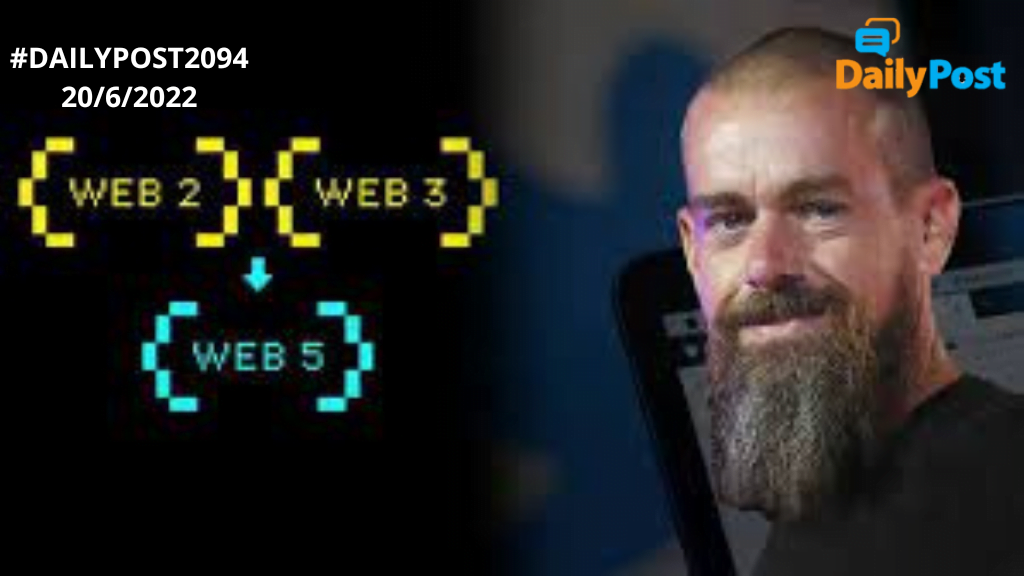DailyPost 2094
JACK DORSEY’s WEB5
Years and years of pervasive internet use, which keeps on increasing by the day, both by coverage, usage and intensity, have made the minds digital futurists thinking yet again. The common thread of the thought in that internet and digital technology are not a panacea to all our ills, that these technologies have the capabilities to create different type of ills and as we move further the current mechanism and nature of the internet needs to change. It is a consensus that an individual / single user needs to be in the center of the internet based digital / cyber ecosystem. The current state of the internet has gone the way of centralisation and the big business corporation way, with all the ills these corporations carry, and have added to that the unassailable power, which comes by way of data dominance. Data fuels the world, much more than all varieties of fuels put together.
The internet has transformed itself in more ways than one, since its inception in the ‘90s. Nobody knew the growth trajectory, but everyone felt something great was happening, and so wanted to be a part of the party. Web1 can be called the ”read-only”*era. The Internet was a *content delivery system and one could engage passively with the web pages. The Web1 age can be broadly extended from 1991 to 2004. Web2 was the next avatar, a progression emanating out of the first one. Suffice to say, each stage of the internet prepares for the next one. Web2 is the ”read and write” era. We are still in this stage, it allowed the user to interact with each other and gave rise to social media platforms and the vice versa. User orientation and high speed internet allowed for more and more complex information to be created and shared.
While still being in the Web2 era, we are for sure at the cusp of Web3, some broad contours and technologies that would shape this age are broadly emerging. This would be the next generation of the internet, as we all know to be built on blockchain technology, decentralization would be the core philosophy and its operating principle, with it transforming into ”read – write – execute” version. It would be intermediary less of all types and also government less. Distributed networks would at its core. Online users would control their digital entity and also control how their data is being used. We see the first usage in digital finance platforms and central bank digital currencies. Web3 aims at addressing the most common and hugely detrimental deficiencies of Web2. Twitter founder Jack Dorsey has an audacious plan of skipping Web3 and Web4 and hitting straightway into Web5.
Both Web3 and Dosey’s Web5 are based on blockchain. Jack Dorsey feels that there is limited push towards decentralisation. The former Twitter CEO is of the opinion that from the internet IT behemoths of Web2, the power will shift to venture capitalists funding the Web3 projects. He said, ”You don’t own Web3…. It’s ultimately a centralized entity with a different label.” Rather than building on Web3, he wants to put Web2 and Web3 together to create his own Web5. Dorsey’s recently launched project The Block Head is in this direction, democratization of the web and users getting direct control of their identity and data. Though Dorsey feels Web5 would be the most important contribution to the internet, one is still not sure, how will it be conspicuously different from Web3. Identity and app layers would be separate from monetary layers. Cryptocurrency can be dispensed with, a connect which is a major possibility in Web3. Given its complexity, its delivery can remain a conjecture only, as of now.
INTERNET IS IN FOR A PARADIGM SHIFT.
Sanjay Sahay

